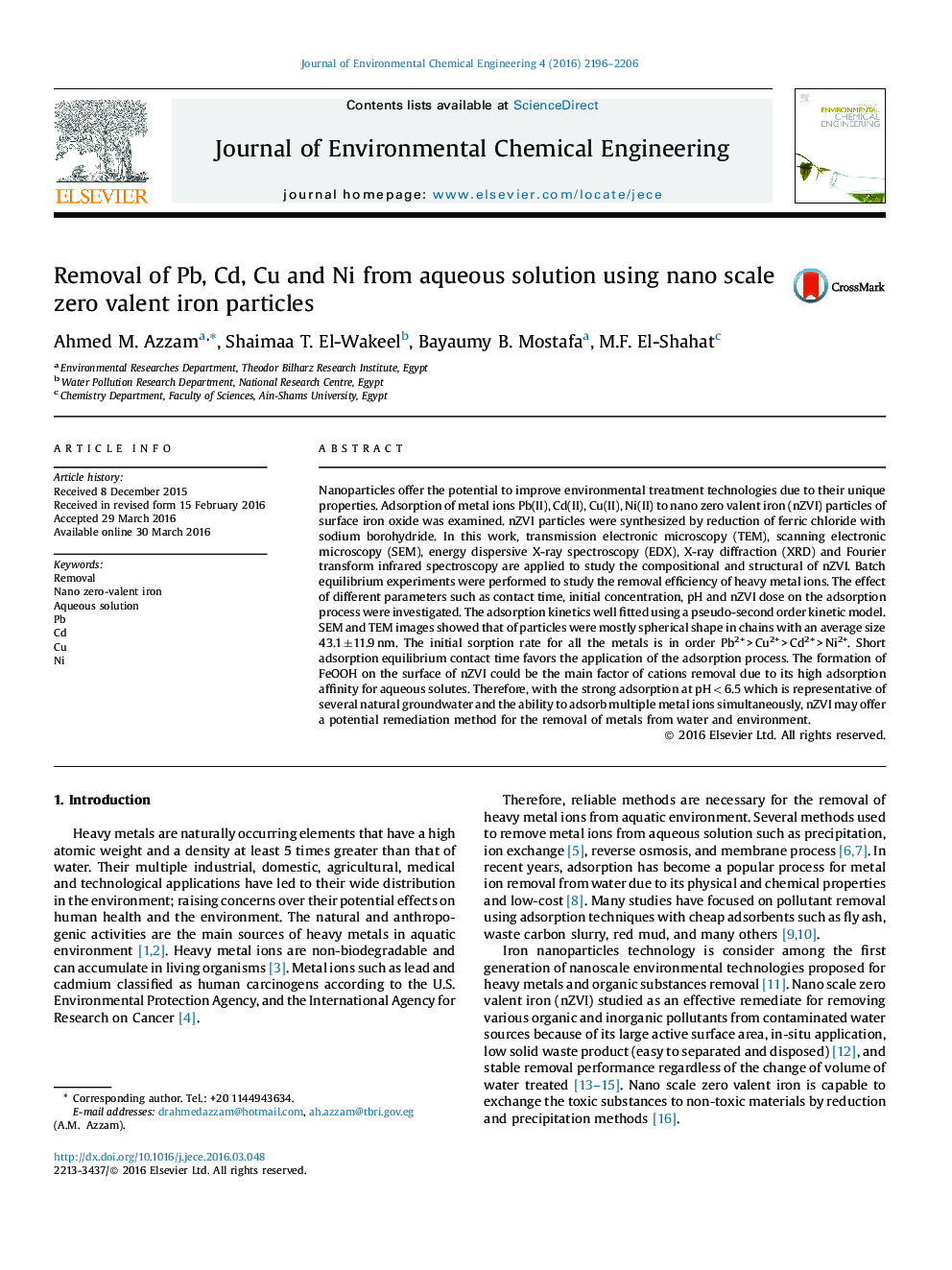| Article ID | Journal | Published Year | Pages | File Type |
|---|---|---|---|---|
| 221704 | Journal of Environmental Chemical Engineering | 2016 | 11 Pages |
Nanoparticles offer the potential to improve environmental treatment technologies due to their unique properties. Adsorption of metal ions Pb(II), Cd(II), Cu(II), Ni(II) to nano zero valent iron (nZVI) particles of surface iron oxide was examined. nZVI particles were synthesized by reduction of ferric chloride with sodium borohydride. In this work, transmission electronic microscopy (TEM), scanning electronic microscopy (SEM), energy dispersive X-ray spectroscopy (EDX), X-ray diffraction (XRD) and Fourier transform infrared spectroscopy are applied to study the compositional and structural of nZVI. Batch equilibrium experiments were performed to study the removal efficiency of heavy metal ions. The effect of different parameters such as contact time, initial concentration, pH and nZVI dose on the adsorption process were investigated. The adsorption kinetics well fitted using a pseudo-second order kinetic model. SEM and TEM images showed that of particles were mostly spherical shape in chains with an average size 43.1 ± 11.9 nm. The initial sorption rate for all the metals is in order Pb2+ > Cu2+ > Cd2+ > Ni2+. Short adsorption equilibrium contact time favors the application of the adsorption process. The formation of FeOOH on the surface of nZVI could be the main factor of cations removal due to its high adsorption affinity for aqueous solutes. Therefore, with the strong adsorption at pH < 6.5 which is representative of several natural groundwater and the ability to adsorb multiple metal ions simultaneously, nZVI may offer a potential remediation method for the removal of metals from water and environment.
